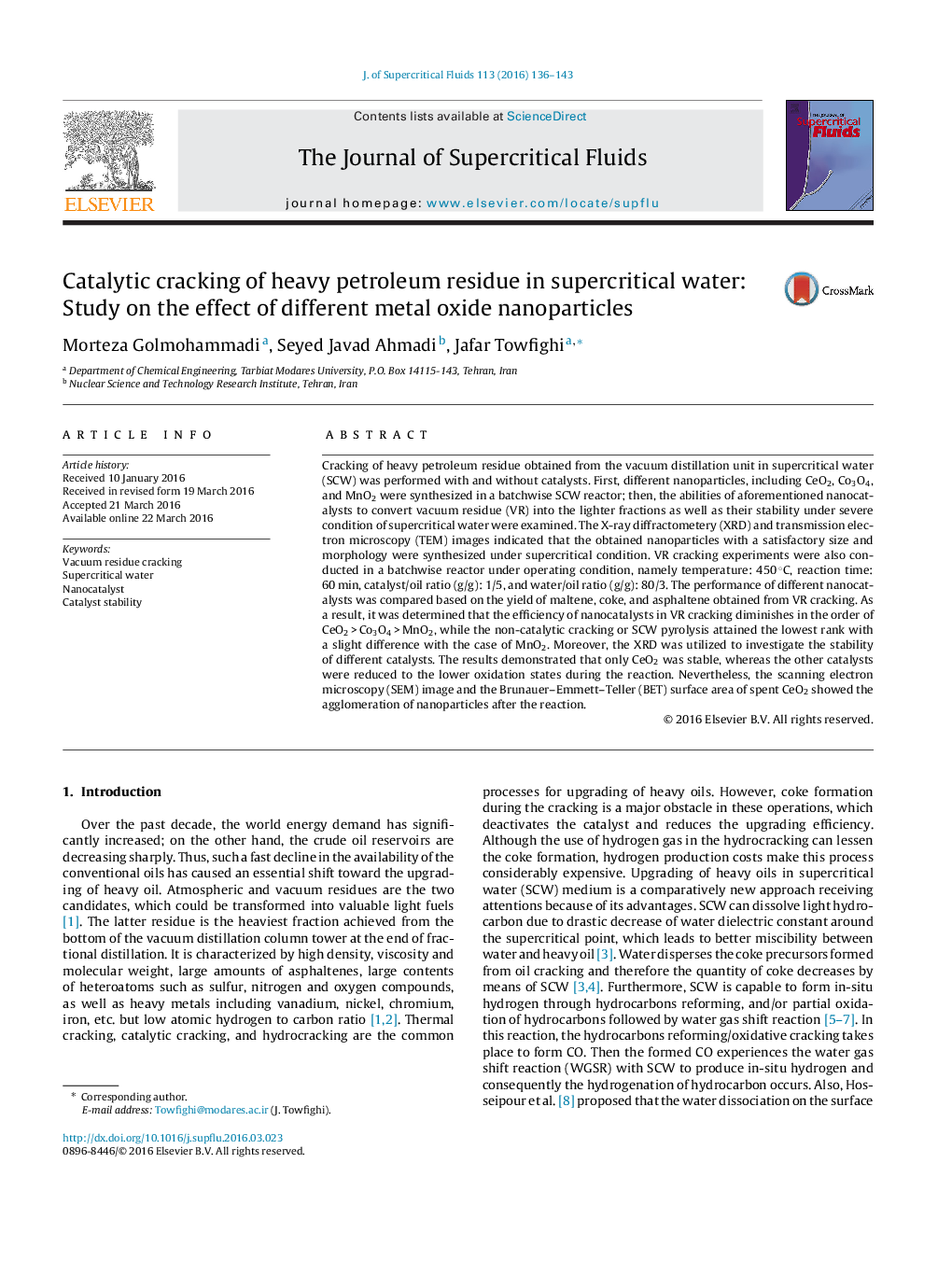| کد مقاله | کد نشریه | سال انتشار | مقاله انگلیسی | نسخه تمام متن |
|---|---|---|---|---|
| 230001 | 1427364 | 2016 | 8 صفحه PDF | دانلود رایگان |
• CeO2, Co3O4, and MnO2 nanoparticles were synthesized in a batchwise SCW reactor.
• The ability of different nanocatalysts in upgrading of vacuum residue (VR) was examined.
• CeO2 exhibited the best performance from the reaction yield as well as the catalytic stability point of view.
• Stability and catalytic activity of CeO2 was evaluated after two successive experiment runs.
• Appropriate performance of CeO2 can be ascribed to its redox property and high value of total OSC.
Cracking of heavy petroleum residue obtained from the vacuum distillation unit in supercritical water (SCW) was performed with and without catalysts. First, different nanoparticles, including CeO2, Co3O4, and MnO2 were synthesized in a batchwise SCW reactor; then, the abilities of aforementioned nanocatalysts to convert vacuum residue (VR) into the lighter fractions as well as their stability under severe condition of supercritical water were examined. The X-ray diffractometery (XRD) and transmission electron microscopy (TEM) images indicated that the obtained nanoparticles with a satisfactory size and morphology were synthesized under supercritical condition. VR cracking experiments were also conducted in a batchwise reactor under operating condition, namely temperature: 450 °C, reaction time: 60 min, catalyst/oil ratio (g/g): 1/5, and water/oil ratio (g/g): 80/3. The performance of different nanocatalysts was compared based on the yield of maltene, coke, and asphaltene obtained from VR cracking. As a result, it was determined that the efficiency of nanocatalysts in VR cracking diminishes in the order of CeO2 > Co3O4 > MnO2, while the non-catalytic cracking or SCW pyrolysis attained the lowest rank with a slight difference with the case of MnO2. Moreover, the XRD was utilized to investigate the stability of different catalysts. The results demonstrated that only CeO2 was stable, whereas the other catalysts were reduced to the lower oxidation states during the reaction. Nevertheless, the scanning electron microscopy (SEM) image and the Brunauer–Emmett–Teller (BET) surface area of spent CeO2 showed the agglomeration of nanoparticles after the reaction.
Figure optionsDownload as PowerPoint slide
Journal: The Journal of Supercritical Fluids - Volume 113, July 2016, Pages 136–143
